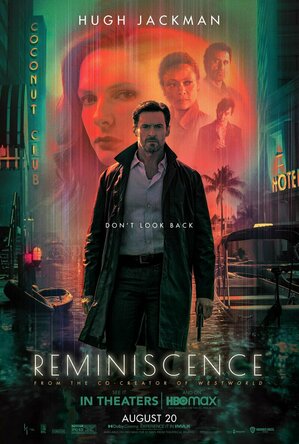
fortunica - Tarot Advice
Lifestyle and Entertainment
App
Are they the one? Should you take that job? Feeling confused and do not know what to do? Do not...

nearbuy.com: The Step-Out App
Lifestyle and Food & Drink
App
More than 4 million people across India are using nearbuy.com right now to discover new experiences...

Lloyds Bank Mobile Banking
Finance and Business
App
When it’s hard to find a moment to do those small but important things, our Mobile Banking app is...

Hornet, The Gay Social Network
Communication, Photo & Video and Social Networking
App
Hornet makes it fun and easy for gay, bi, and curious guys to connect with each other. Find great...

Coach it Soccer
Sports and Productivity
App
Built exclusively for the iPad, Coach it Soccer is the first application of its kind, to help soccer...

EasyTrails GPS
Sports and Navigation
App
EasyTrails GPS is the GPS tracker application for your iPhone. The perfect application for those who...

SnapType Pro
Education and Medical
App
This is the Pro version of SnapType, which has all of the features of the original SnapType plus the...

Lloyds Bank Express Logon
Finance
App
Express Logon for iPad is specially designed to make banking with us fast, convenient and more...
BankofMarquis (1832 KP) rated Reminiscence (2021) in Movies
Aug 24, 2021
Lisa Joy has written and directed her own “trippy, play with time” film, REMINISCENCE that has quite a few of the hallmarks of a Christopher (or Jonathan) Nolan film - but it also has one very unsettling aspect to it - it plays like a twice over copy of something else.
REMINISCENCE is a classic neo-noir with our hero being smitten by the femme fatale which draws him into her world, where murder, criminal activities and low-lifes run rampant all with a downbeat tone.
This sounds like a terrific premise for a Christopher Nolan film, unfortunately, in the hands of Lisa Joy, it is like watching a local community theater production of a Broadway musical.
The first 1/3 of this film is one long, laborious setup for the tragedy that will unfold and it is told at an uninteresting snail’s pace. Reminiscence picks up a bit in the middle with a pretty good action scene - and plot twist - before squandering this momentum with mediocrity at the end.
Joy’s script - which was on Hollywood’s infamous “blacklist’ of scripts for many, many years (a list of screenplays that are generally praised, but for some reason or another have not been produced), is at the core of the problem. The dialogue is not very interesting and dripping with heavy film noire clichés. She does not follow the Hollywood doctrine of “show, don’t tell”. She TELLS the audience much, much more than is needed and never really gives the audience any credit for figuring things out for themselves.
For example, there is a “dirty cop” that is central to the plot (there always is in this type of film). So, how do the other characters in the film address him? “You’re the dirty cop…”
I’d laugh if I wasn’t so bored.
What DOES work in this film is the acting of Hugh Jackman (as our hero), Rebecca Ferguson (as the femme fatale) and - especially - Thandie Newton as the “Gal Friday” of Jackman’s. Someone needs to give this talented actress a true showcase of her talents.
Someone also needs to give good ol’ Cliff Curtis a vehicle for his talents - he is one of the most misused good performers in Hollywood and he is misused in this film as well.
And…don’t get me started on the special effects. If you are going to make a trippy, sci-fi, futuristic neo-noire thriller, you probably shouldn’t cut the corner on the special effects, but this film does that, amazingly.
But…with a good Director at the helm there is enough “good enough” here (especially in the acting) that you should be able to pull something decent out of it.
But…Joy is making her theatrical film directing debut - exactly the type of director that this film does not need. What this film needed wasn’t a rookie director like Joy, it needed a Nolan - either Jonathan or (preferably) Christopher to make this work. But, one will have to be contented with a copy of a copy.
And that’s just not good enough.
Letter Grade: C+ (the performances of the leads almost salvage things.
5 stars (out of 10) - and you can take that to the Bank(ofMarquis)
graveyardgremlin (7194 KP) rated Vixen (Flappers, #1) in Books
Feb 15, 2019
<b><i>Once upon a time there were three beautiful girls who went to the best schools (and speakeasies), and they were each assigned booze and clothes that are the cat's meow. But the flapper lifestyle took them into different directions and now they work to find out who they are and what makes them truly happy. My name is Vixen.</i></b>
And so you've been introduced to the first installment of The Flappers series Charlie's Angels' style (the best I was able to come up with anyway).
<b>Meet our <s>Angels</s> Vixens:</b>
<u><i>Gloria</i></u> - She's the one who has it all: <i>the</i> name, riches, looks, clothes, a handsome fiancee, everything comes easily to her, and everybody seemingly loves her. But this poor little rich girl isn't so happy after all and so she begins to rebel.
<u><i>Clara</i></u> - Burned by her former flapper lifestyle, she's now trying to start over as "Country Clara" without her sordid past coming to light. So has she turned into a goody-two shoes or is it just part of a grander scheme? Only time will tell.
<u><i>Lorraine</i></u> - Jealous of best friend, Gloria, she's desperate to step out of Glo's shadow to become the center of attention as an individual.
<b>Before getting to my review, there are a few questions that should be addressed:</b>
Is this great literature? <i>No.</i>
Will this book change your life? <i>No.</i>
Will you learn anything from reading this book? <i>No. Well, maybe some twenties' slang.</i>
Is this book accurate to the period? <i>No, there are some liberties, but it's good enough as wallpaper to the players and scenes.</i>
Is this book entertaining beyond belief? <i>A resounding YES!</i>
VIXEN is very easy to read and captured my attention from the first page, and while it may not be the best book ever, I had a lot of fun reading it. While there's nothing glaringly obvious anachronism-wise, I did question some word choices, phrases, and actions, but overall they were easy to overlook and I likened it to watching A Knight's Tale starring Heath Ledger. Written in third-person, each chapter focuses on one the three girls' point-of-view, starting with Gloria and continuing with Clara and then Lorraine, throughout the book until the end.
As for the characters, Clara (named after Ms. Clara Bow?) was definitely my favorite to read about, she's recovering from the aftereffects of her life in New York City (which includes a boy, of course), and is trying her best to leave the past behind and move on with her life. Her story had a lot to offer and she felt like a real person who had made mistakes and was now left dealing with the repercussions. Lorraine was a trainwreck you can't take your eyes off of, and while I can't say I liked her, I felt sorry for her. She tries way too hard to stand out and ends up making herself look pathetic; if she keeps it up she'll turn into a very ugly person whom everyone hates. Forget Gloria, Lorraine is the "real" poor little rich girl of the book. She's in the middle of making all the wrong decisions and we're along for the journey, which made her multidimensional and interesting to read about as well. Gloria was my least favorite, mainly because I don't think the author knew quite how to write her. At one moment Gloria seemed like a good girl rebelling, but then there would be moments where she was a real bitch and those two aspects just didn't gel into a cohesive whole. Now if she was seemingly sweet on the outside and really was a conniving bitch underneath, then I'd be on board or at least would get it. But she wasn't that type of bitch and she wasn't Alexis Carrington-bitchy (or insert less-dated reference here) either. How she was written made her look more like Sybil and didn't render me to sympathize with her at all. It didn't help that I felt she was too close to a Mary-Sue for my liking. I don't like perfect or near-perfect characters, they're boring and so was she. What was her motivation for anything, such as singing? Was that always a dream or did it just now come about? Is her recent behavior only happening because she's unhappy? Sorry, but there's just not enough there to make me care about this character. Gloria needed to be more fleshed out to make her feel like a real human, with real thoughts in her head and real feelings, and not a cliched cardboard cut-out.
The love aspects of the novel were fairly glossed over, mainly Gloria and Jerome's story, and felt more like teenage hormones than actual real love.
<i>"I don't know you but you're hot and I love you."
"Nothing will keep us apart!"
"We'll be together forever!"</i>
Which is too bad because I like the idea of an interracial romance taking place in the 1920's, it could have been fantastic, but instead was tepid and generally unromantic. It didn't help that half the duo was boring old Gloria and the other half never developed beyond the fact that he's a black musician who's forbidden to her due to the color of his skin. I wished for more impact and still hope for that in the next installment of the series. Clara's budding relationship with Marcus was far more realistic because they actually had conversations *gasp* and was well-paced. The relationships between the girls were touch and go, sometimes they felt authentic, then at other times interactions appeared too advanced to where the relationship had last left off; it was like there were scenes edited out in chunks. The same could be said of the developing romance between Gloria and Jerome.
So a few things bothered me in the book, such as the issue I had with every girl who wasn't one of the main trio being cattily described, i.e. eyes are close together, that color makes her look sallow, etc. Can we get over doing that already? That's not encouraging good behavior. A little more positivity would be a refreshing change. Another thing that annoyed me was at one point, the crap hit the fan and *minor spoiler* <spoiler>Gloria's career as a torch singer, which she's naturally perfect at (of course), came out into the open. So who does she immediately blame? Her best friend, Lorraine of course, whom she slaps! And who to this point Gloria had no provocation to even think it'd be her who had spilled the beans. Lorraine had not done anything to deserve Gloria's wrath, or at least nothing she knew about yet, so I don't know if the author had forgotten that fact or what. It did not make any kind of sense because there were other people who knew what Gloria was up to and others who could have easily found out. To me it was sloppy writing. What kind of friend does that make Gloria anyway? Not one I'd like, who always thinks the worst of her best friend without any miniscule proof of guilt. Told ya she was a bitch</spoiler>. There were some minor editing inaccuracies, such as when Gloria's dress goes from gold sequined to red in less than a page (pages 74-5) but nothing too overt to jar me out of the book altogether. Lastly, perhaps there was a bit too much twenties' slang that wasn't always incorporated into the text as smoothly as possible.
Overall, the plots were well-done and moved along at a brisk enough pace that I never got bored. The ending unfolded so that it tied up the multiple plotlines while still keeping plenty of loose ends for the sequel. So, a lot of the book is superficial, in some cases there are caricatures instead of characters, and it is a shallow interpretation of the Roaring Twenties, I don't care, the book is just plain fun and sometimes that's all I need. And while I can't say I loved this book and it totally lived up to its beautiful cover (seriously that dress is gorgeous, though I could do without the pit shot), I was suitably entertained and will read the sequels to find out what happens next, while I keep up the hope that Gloria will turn into a real, live girl.

